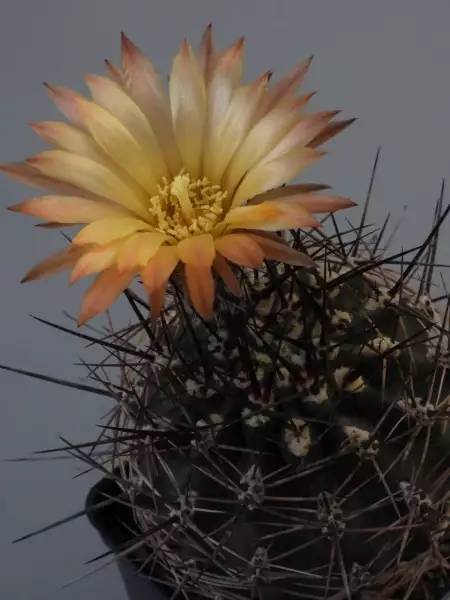Pyrrhocactus straussianus R542 MG1187.6 5/12/20
Here is another genus that Kattermann lumped into Eriosyce. The name of the now super-genus means "hairy fig" in Greek. The fruit of all the lumped plants when ripe is a hollow fleshy shell filled with loose seeds. That is, all the umbilical cords that connected the embryos in the forming seeds did not form meat in the fruit. They just withered away as the seed ripened and the embryos matured, so the ripe fruit is empty except for some dry seeds. The fleshy shell is covered in sparse tufts of hair. Hence "hairy fig." I grow figs, and there is no resemblance of the Eriosyce fruit to a fig. Figs have a delicious creamy sweet meat in which the seeds, lots of seeds, are distributed. The sweet meat is what happened to the umbilical cords of the fig embryos. And, no obvious hair on a fig. (But the fig has hair, somewhere. You all probably know that hair is one of those things that set mammals apart from other kinds of animals. No other group has hair. No frogs, no fish, no grasshoppers, no lizards, etc. All mammals have hair. It happens that all plants, not just cacti, have hair, somewhere. So does this mean that a dedicated taxonomic lumper should try to find a reason to put all mammals and all plants in the same taxonomic group?) (32/56)
<<Prev
Index
Next>>

